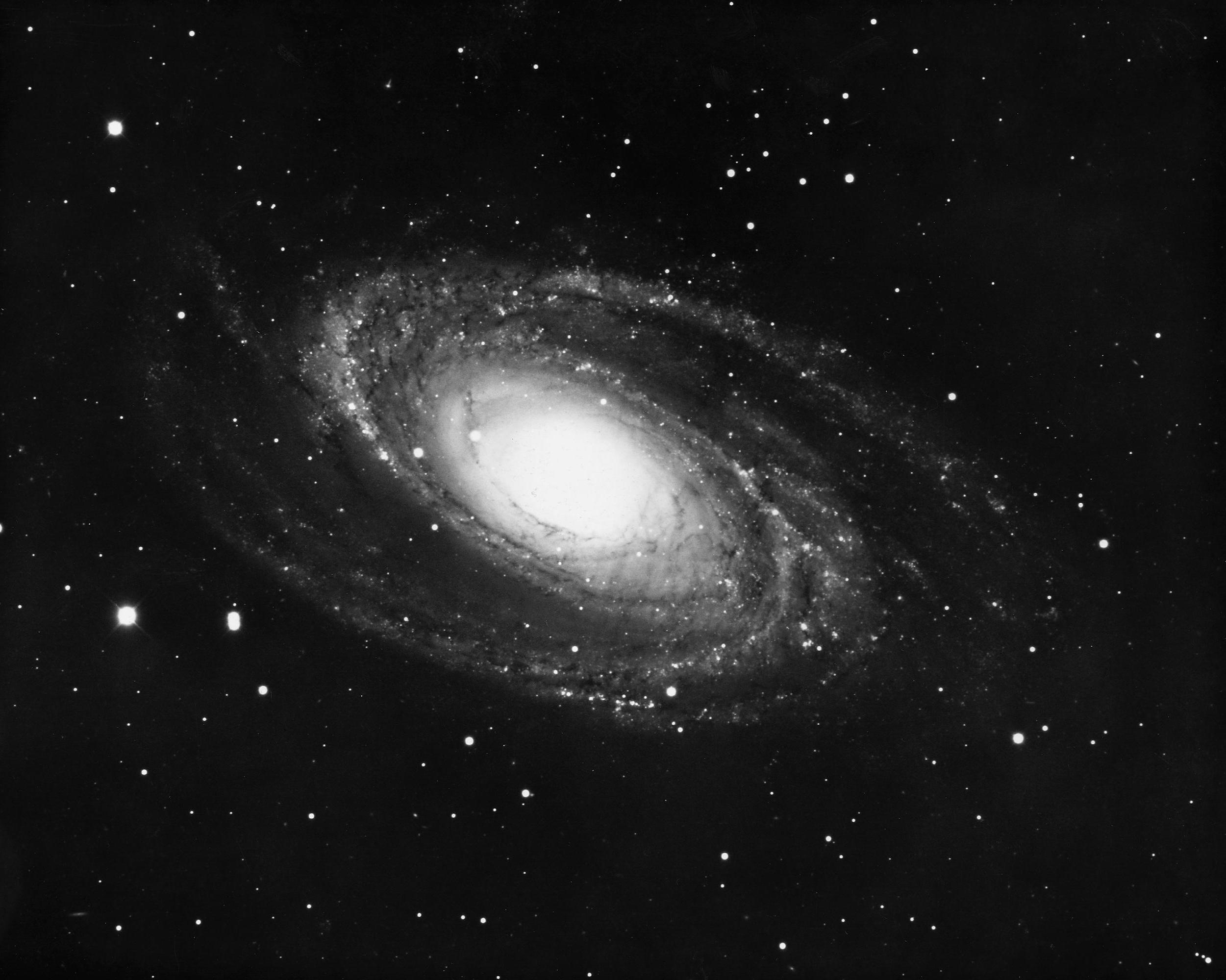 slide1 ==> 3.1: Messier 81, a nearby galaxy that looks much like our Milky Way would from outside (NOAO/AURA/NSF)
slide1 ==> 3.1: Messier 81, a nearby galaxy that looks much like our Milky Way would from outside (NOAO/AURA/NSF)
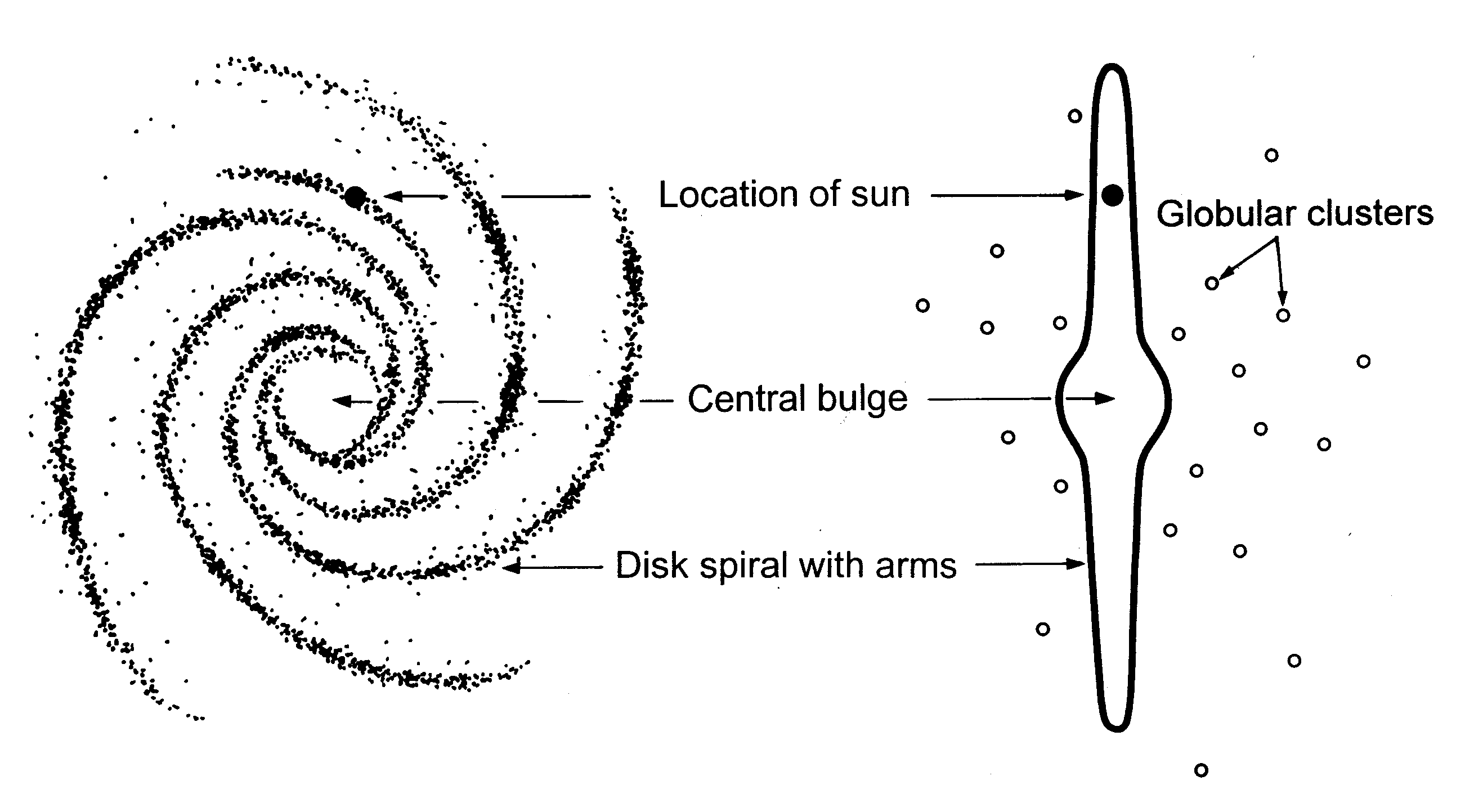 slide2 ==> 3.2: Face-on and side views of a typical spiral galaxy like the Milky Way
slide2 ==> 3.2: Face-on and side views of a typical spiral galaxy like the Milky Way
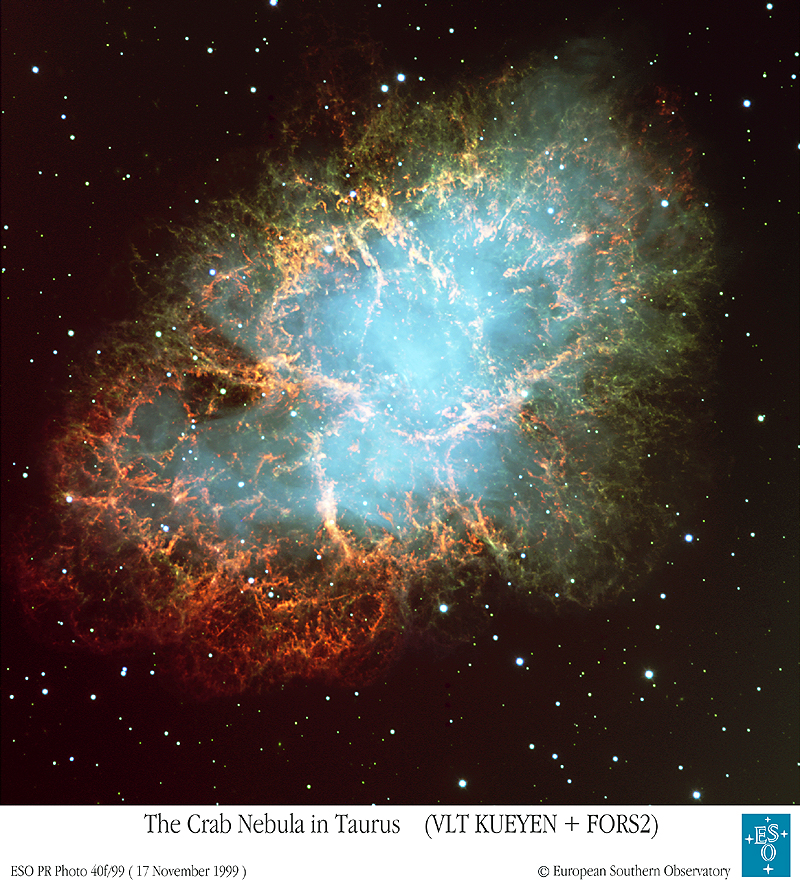 slide3 ==> 3.3: Massive stars end their lives in supernova explosions like the one that created the Crab Nebula (ESO)
slide3 ==> 3.3: Massive stars end their lives in supernova explosions like the one that created the Crab Nebula (ESO)
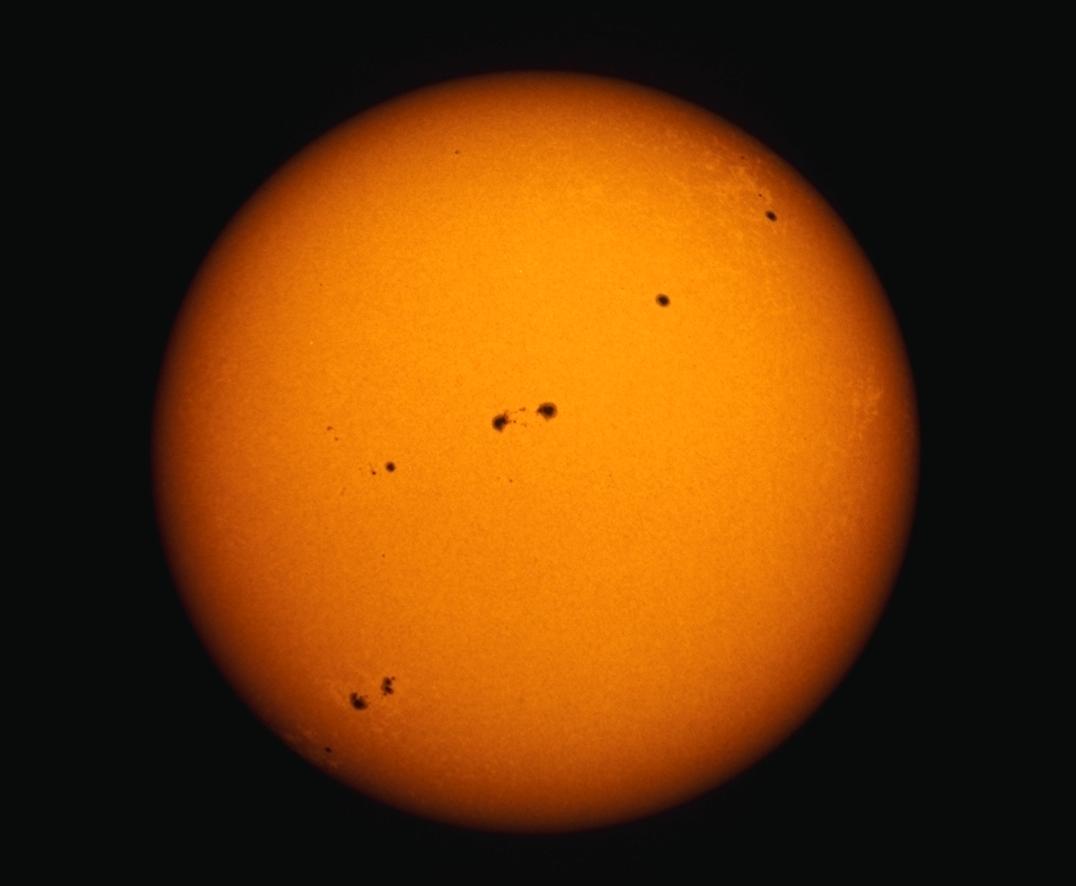 slide4 ==> 3.4: In normal light, the Sun's disk shows few features except sunspots, and plage areas near the limb (NOAO/AURA/NSF)
slide4 ==> 3.4: In normal light, the Sun's disk shows few features except sunspots, and plage areas near the limb (NOAO/AURA/NSF)
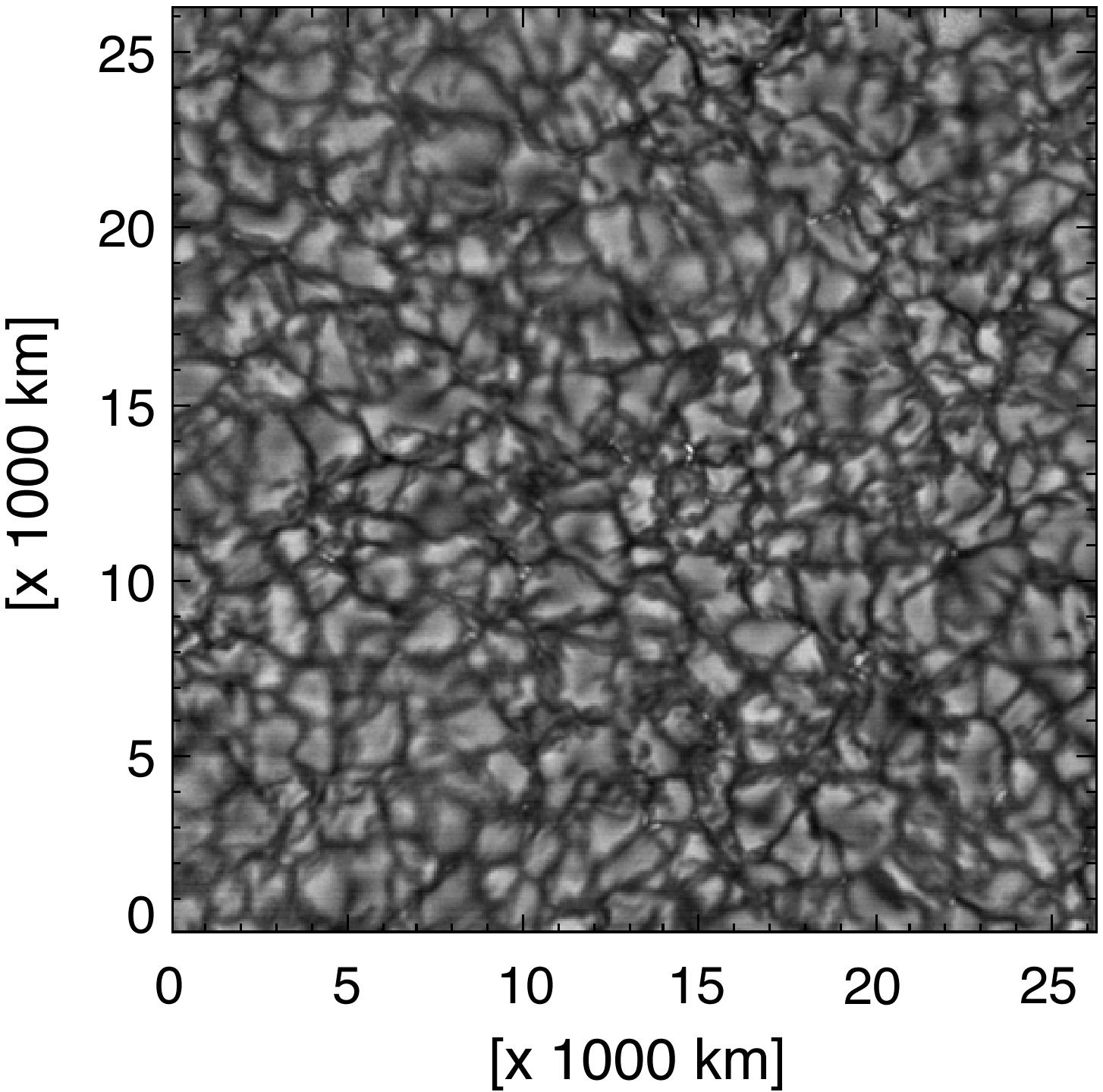 slide5 ==> 3.5: Solar granulation reveals the convective (boiling) motions of gases in the Sun's atmosphere (T. Rimmele/NOAO/AURA/NSF)
slide5 ==> 3.5: Solar granulation reveals the convective (boiling) motions of gases in the Sun's atmosphere (T. Rimmele/NOAO/AURA/NSF)
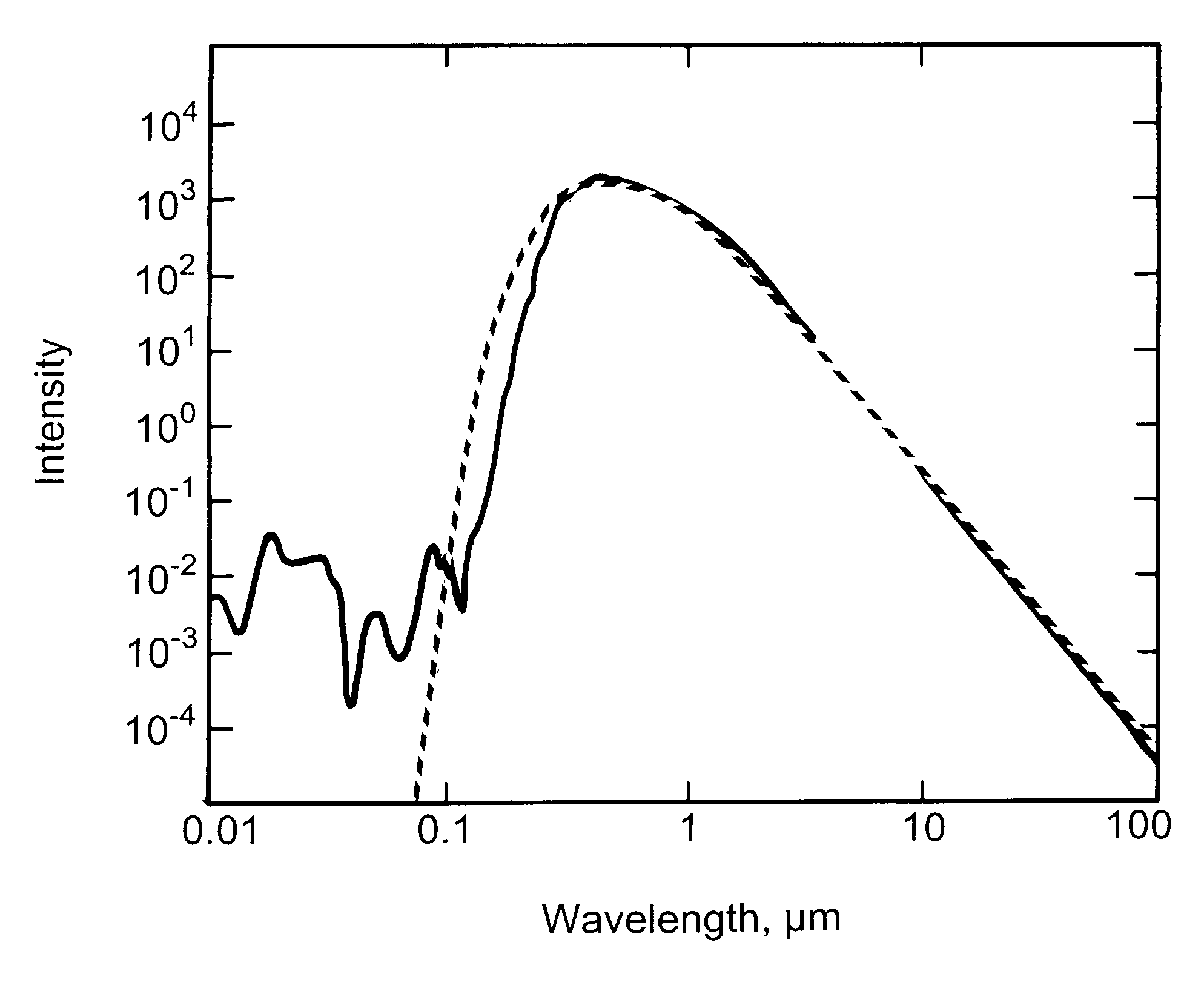 slide6 ==> 3.6: The Sun's spectrum (solid) is similar to that of an ideal radiating body (dashed) at 5770 K
slide6 ==> 3.6: The Sun's spectrum (solid) is similar to that of an ideal radiating body (dashed) at 5770 K
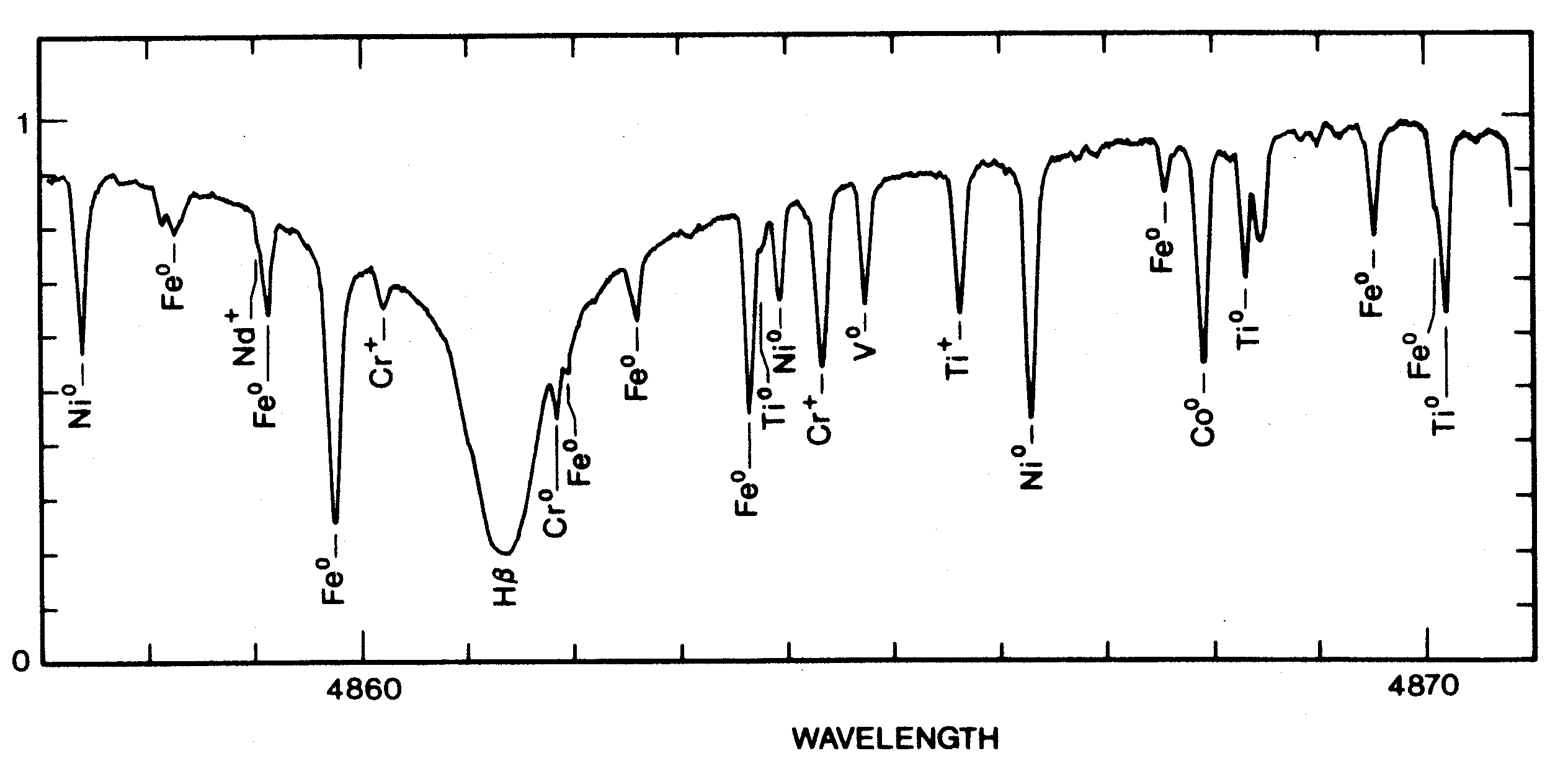 slide7 ==> 3.7: A tiny part of the Sun's spectrum shows many colours weakened by absorption by specific atoms
slide7 ==> 3.7: A tiny part of the Sun's spectrum shows many colours weakened by absorption by specific atoms
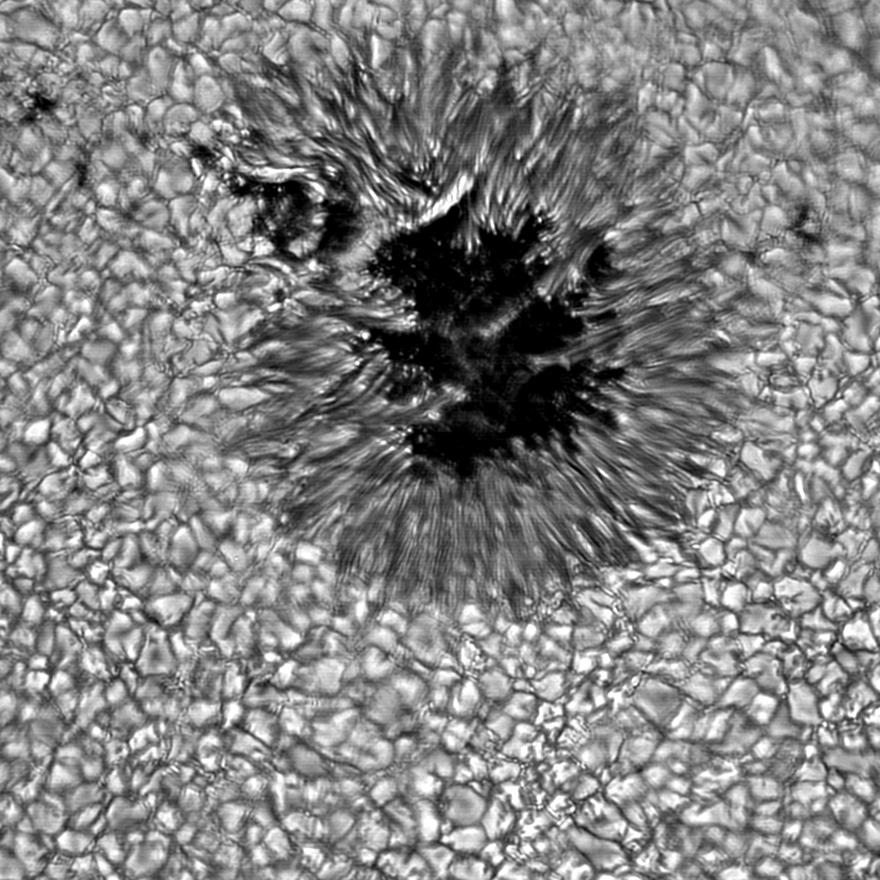 slide8 ==> 3.8: Sunspots are regions where intense magnetic fields emerge from the solar interior (T. Rimmele/NOAO/AURA/NSF)
slide8 ==> 3.8: Sunspots are regions where intense magnetic fields emerge from the solar interior (T. Rimmele/NOAO/AURA/NSF)
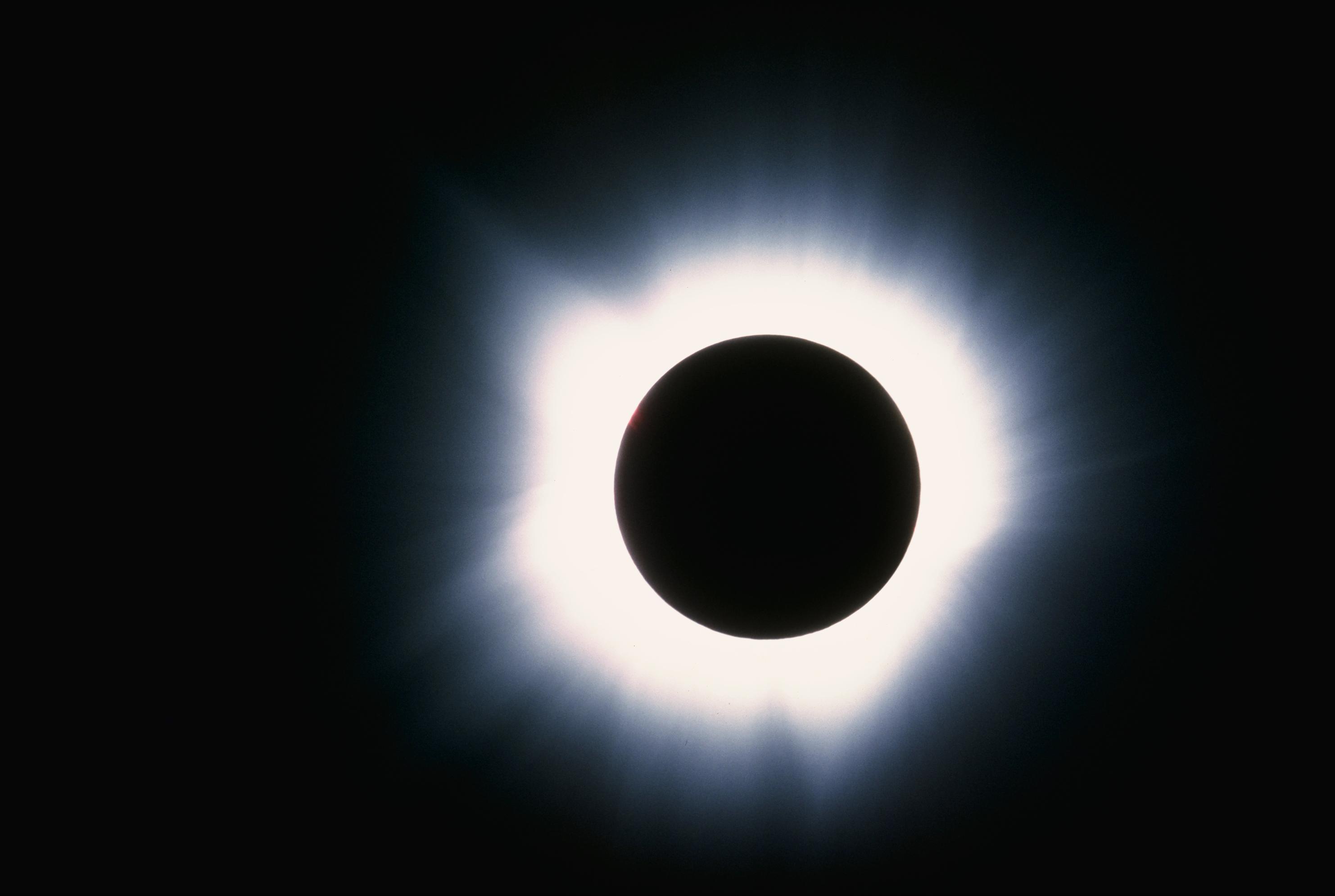 slide9 ==> 3.9: During a solar eclipse the Sun's corona is briefly visible around the Moon (NOAO/AURA/NSF)
slide9 ==> 3.9: During a solar eclipse the Sun's corona is briefly visible around the Moon (NOAO/AURA/NSF)
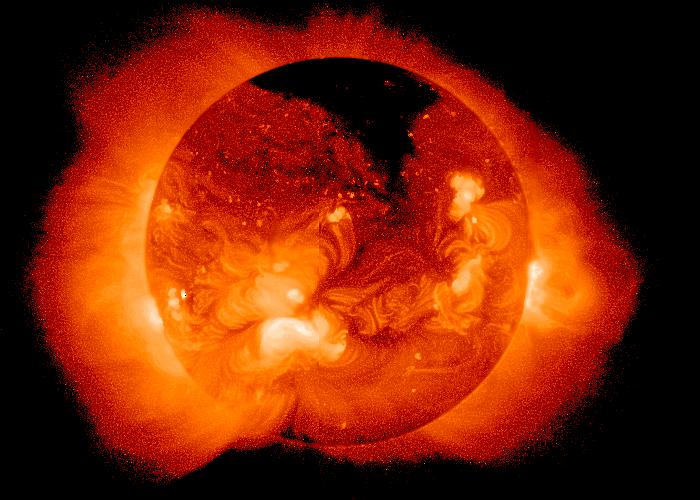 slide10 ==> 3.10: In x-rays, the surface of the Sun is dark but the surrounding corona is bright (NASA)
slide10 ==> 3.10: In x-rays, the surface of the Sun is dark but the surrounding corona is bright (NASA)
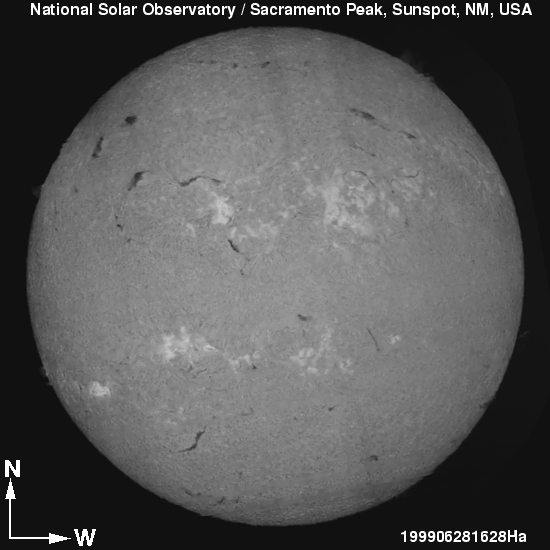 slide11 ==> 3.11: Through an H-alpha filter we see gases several hundred km above the usual solar surface (NOAO/AURA/NSF)
slide11 ==> 3.11: Through an H-alpha filter we see gases several hundred km above the usual solar surface (NOAO/AURA/NSF)
 slide12 ==> 3.12: A flare erupts and fires a surge of hot, dense gas away from the solar surface (NOAO/AURA/NSF)
slide12 ==> 3.12: A flare erupts and fires a surge of hot, dense gas away from the solar surface (NOAO/AURA/NSF)
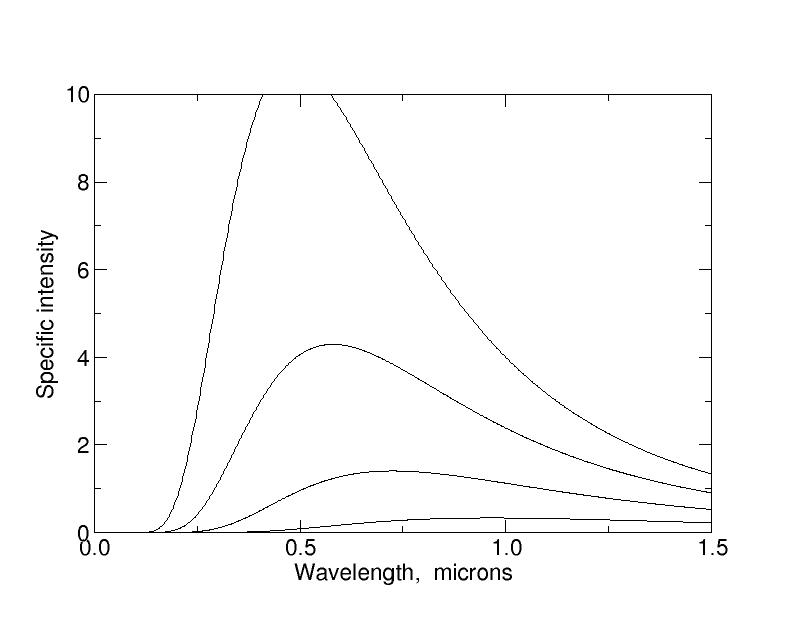 slide13 ==> 3.13: Specific intensity for black bodies at 3000 (bottom), 4000, 5000, and 6000 K
slide13 ==> 3.13: Specific intensity for black bodies at 3000 (bottom), 4000, 5000, and 6000 K